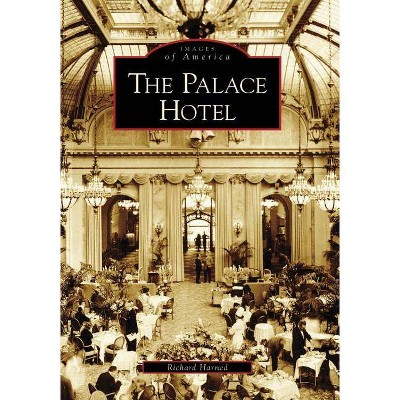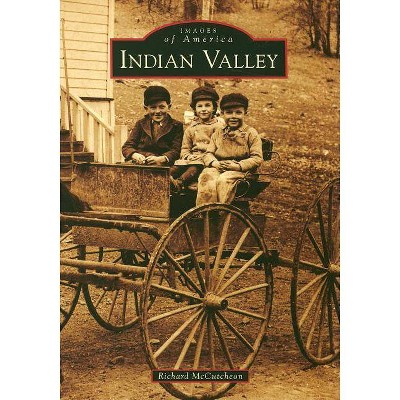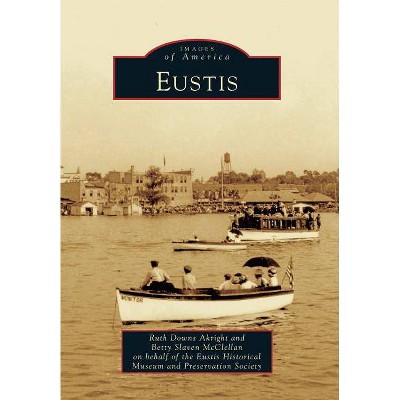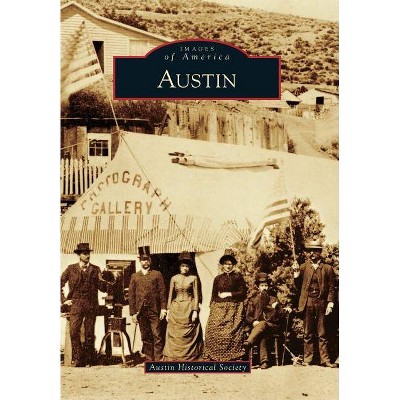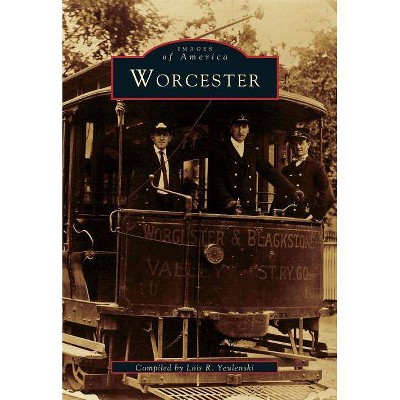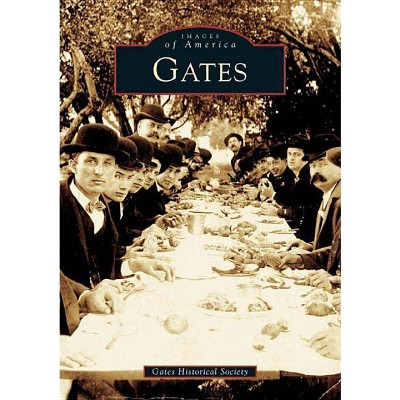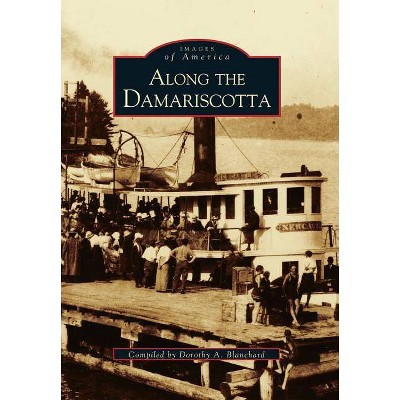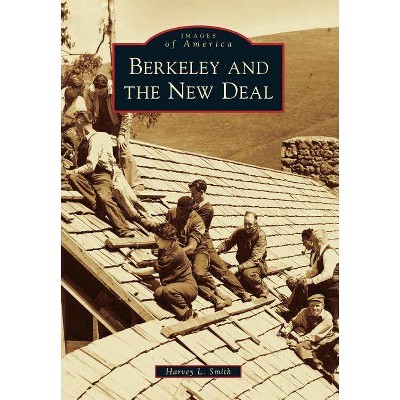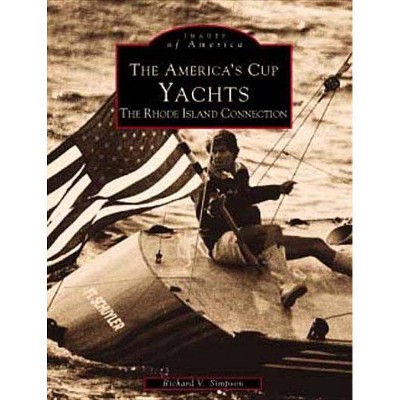Fred Harvey Houses of the Southwest - (Images of America (Arcadia Publishing)) by Richard Melzer (Paperback)
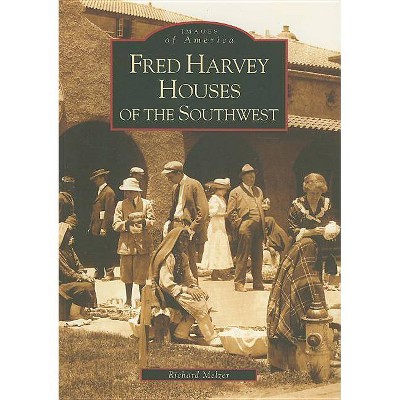
Similar Products
Products of same category from the store
AllProduct info
<p/><br></br><p><b> Book Synopsis </b></p></br></br>The Fred Harvey name will forever be associated with the high-quality restaurants, hotels, and resorts situated along the Atchison, Topeka, and Santa Fe Railway in the American Southwest. The Fred Harvey Company surprised travelers, who were accustomed to dingy beaneries staffed with rough waiters, by presenting attractive, courteous servers known as the Harvey Girls. Today many Harvey Houses serve as museums, offices, and civic centers throughout the Southwest. Only a few Harvey Houses remain as first-class hotels, and they are located at the Grand Canyon, in Winslow, Arizona, and in Santa Fe, New Mexico."<p/><br></br><p><b> Review Quotes </b></p></br></br><br>Title: Civilizing the Old West <br>Author: David Steinberg <br>Publisher: Albuquerque Journal <br>Date: 1/18/2009 <p><br>Judy Garland was a Harvey Girl, if only in film. Garland starred in the 1946 movie "The Harvey Girls," which featured the Oscar-winning song "On the Atchison, Topeka and the Santa Fe." <p><br>In real life, the Harvey Girls were waitresses at the popular Harvey Houses, which British immigrant Fred Harvey had started in the 1880s. The houses really, restaurants, curio shops and in some cases hotels catered to tourists who traveled by train between Chicago and Los Angeles. Most Fred Harvey Houses were at stations along the Santa Fe Railway in the Southwest, such as the razed Alvarado Hotel in Albuquerque and La Castaneda in Las Vegas, N.M. A few others, like La Fonda in downtown Santa Fe and the Montezuma outside of Las Vegas, were luxury hotels miles from the rail stop. The heyday of the houses was in the 1920s. Business dropped off in the next decade with the Great Depression and the rising competition from automobile travel. <p><br>Historian Richard Melzer of Belen has put together a book of vintage photographs and picture postcards that captures the bustle of activities at the famous businesses, the life of the waitresses and other employees and the tourists who visited. <p><br>Garland may not have visited a Harvey House, but a photo (c. 1925) in Melzer's book shows actors Douglas Fairbanks Jr. and Mary Pickford with Albuquerque Mayor Clyde Tingley. The caption says the actors were frequent Alvarado visitors. <p><br>Melzer came to the subject because of his long association as a docent with the Valencia County Historical Society, of which he is currently vice president. The society operates Belen's Harvey House Museum. <p><br>"A lot of people take the Rail Runner to Belen, and that's the place they like to visit," the 59-year-old Melzer said. "It sits by the station." <p><br>Photos in the book show Harvey Houses located at Clovis, Gallup, Deming, San Marcial, Rincon, Vaughn and, briefly, in Raton. <p><br>For the book, Melzer said he wrote the introduction and photo captions and was responsible for gathering the photographs. <p><br>Some of the proceeds of his book will go to support the museum, Melzer said. <p><br>He's invited former Harvey Girls who live in the Albuquerque area to attend his book event at Bookworks today . <p><br>Melzer, who is also president of the Historical Society of New Mexico, teaches two New Mexico history classes at the UNM Valencia campus in which he discusses the Harvey Houses. <p><br>Besides La Fonda, several former Harvey Houses are still operating as hotels, according to Melzer. They are El Tovar and Bright Angel at the Grand Canyon, one at Winslow, Ariz., and another in Needles, Calif. <p><br>The Albuquerque Museum will present the exhibit "Jewel of the Railroad Era: Albuquerque's Alvarado Hotel," which opens March 8. It will be up through June 7. In conjunction with the exhibit, the museum is publishing Deb Slaney's book of the same title. <p><br>Melzer wrote the introduction for a newly released history book. It is titled "The Whole Damned World: New Mexico Aggies at War: 1941-1945, World War II Correspondence of Dean Daniel B. Jett" edited by Martha Shipman Andrews. (NMSU Library/Rio Grande Books). Jett was dean of engineering between 1938 and 1947 at the New Mexico College of Agriculture and Mechanic Arts (later NMSU). During the war he corresponded with hundreds of former students. <br>"<br><br>Title: Civilizing the Old West <BR>Author: David Steinberg <BR>Publisher: Albuquerque Journal <BR>Date: 1/18/2009 <P><BR>Judy Garland was a Harvey Girl, if only in film. Garland starred in the 1946 movie "The Harvey Girls," which featured the Oscar-winning song "On the Atchison, Topeka and the Santa Fe." <P><BR>In real life, the Harvey Girls were waitresses at the popular Harvey Houses, which British immigrant Fred Harvey had started in the 1880s. The houses -- really, restaurants, curio shops and in some cases hotels -- catered to tourists who traveled by train between Chicago and Los Angeles. Most Fred Harvey Houses were at stations along the Santa Fe Railway in the Southwest, such as the razed Alvarado Hotel in Albuquerque and La Castaneda in Las Vegas, N.M. A few others, like La Fonda in downtown Santa Fe and the Montezuma outside of Las Vegas, were luxury hotels miles from the rail stop. The heyday of the houses was in the 1920s. Business dropped off in the next decade with the Great Depression and the rising competition from automobile travel. <P><BR>Historian Richard Melzer of Belen has put together a book of vintage photographs and picture postcards that captures the bustle of activities at the famous businesses, the life of the waitresses and other employees and the tourists who visited. <P><BR>Garland may not have visited a Harvey House, but a photo (c. 1925) in Melzer's book shows actors Douglas Fairbanks Jr. and Mary Pickford with Albuquerque Mayor Clyde Tingley. The caption says the actors were frequent Alvarado visitors. <P><BR>Melzer came to the subject because of his long association as a docent with the Valencia County Historical Society, of which he is currently vice president. The society operates Belen's Harvey House Museum. <P><BR>"A lot of people take the Rail Runner to Belen, and that's the place they like to visit," the 59-year-old Melzer said. "It sits by the station." <P><BR>Photos in the book show Harvey Houses located at Clovis, Gallup, Deming, San Marcial, Rincon, Vaughn and, briefly, in Raton. <P><BR>For the book, Melzer said he wrote the introduction and photo captions and was responsible for gathering the photographs. <P><BR>Some of the proceeds of his book will go to support the museum, Melzer said. <P><BR>He's invited former Harvey Girls who live in the Albuquerque area to attend his book event at Bookworks today . <P><BR>Melzer, who is also president of the Historical Society of New Mexico, teaches two New Mexico history classes at the UNM Valencia campus in which he discusses the Harvey Houses. <P><BR>Besides La Fonda, several former Harvey Houses are still operating as hotels, according to Melzer. They are El Tovar and Bright Angel at the Grand Canyon, one at Winslow, Ariz., and another in Needles, Calif. <P><BR>The Albuquerque Museum will present the exhibit "Jewel of the Railroad Era: Albuquerque's Alvarado Hotel," which opens March 8. It will be up through June 7. In conjunction with the exhibit, the museum is publishing Deb Slaney's book of the same title. <P><BR>Melzer wrote the introduction for a newly released history book. It is titled "The Whole Damned World: New Mexico Aggies at War: 1941-1945, World War II Correspondence of Dean Daniel B. Jett" edited by Martha Shipman Andrews. (NMSU Library/Rio Grande Books). Jett was dean of engineering between 1938 and 1947 at the New Mexico College of Agriculture and Mechanic Arts (later NMSU). During the war he corresponded with hundreds of former students. <BR>"<br>
Price History
Price Archive shows prices from various stores, lets you see history and find the cheapest. There is no actual sale on the website. For all support, inquiry and suggestion messages communication@pricearchive.us
